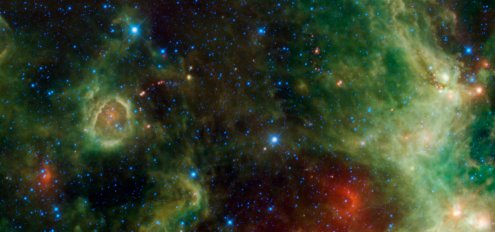
It’s dusty out there: image taken by NASA’s Wide-field Infrared Survey Explorer
By Hamish Johnston
This morning the BBC’s Melvyn Bragg gathered three of the UK’s top astronomers for a chat about the “cool universe” – the vast amounts of matter between the stars that is invisible to optical telescopes.
This dust and gas is best studied using instruments sensitive to infrared radiation – technology that only really got going in the 1960s and works best in space, away from Earth’s infrared glow.
Bragg was joined by Carolin Crawford of Cambridge University, Paul Murdin of Liverpool John Moores University and Imperial College’s Michael Rowan-Robinson, who explained what these infrared telescopes have revealed.
They described a “dynamic universe” in which gas and dust created by the death of past stars is recycled to create stars – and planets – of the future.
“As a result of the new research, we are now beginning to see first-hand the way our planet was formed when the solar system was born,” says Bragg.
You can listen to the broadcast here.



